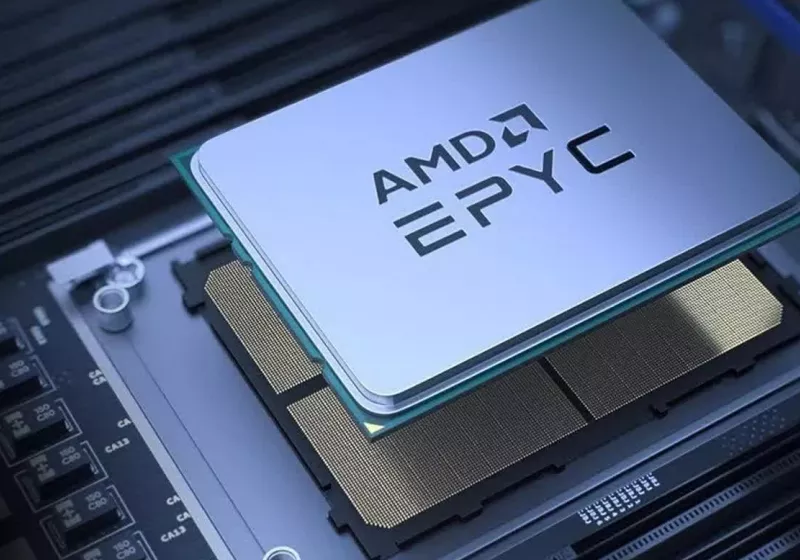Cruz bill could take 6 GHz spectrum away from Wi-Fi, give it to mobile carriers.
Credit: Getty Image | BlackJack3D
Sen. Ted Cruz (R-Texas) has a plan for spectrum auctions that could take frequencies away from Wi-Fi and reallocate them for the exclusive use of wireless carriers. The plan would benefit AT&T, which is based in Cruz's home state, along with Verizon and T-Mobile.
Cruz's proposal revives a years-old controversy over whether the entire 6 GHz band should be devoted to Wi-Fi, which can use the large spectrum band for faster speeds than networks that rely solely on the 2.4 and 5 GHz bands. Congress is on the verge of passing legislation that would require spectrum to be auctioned off for full-power, commercially licensed use, and the question is where that spectrum will come from.
When the House of Representatives passed its so-called "One Big Beautiful Bill," it excluded all of the frequencies between 5.925 and 7.125 gigahertz from the planned spectrum auctions. But Cruz's version of the budget reconciliation bill, which is moving quickly toward a final vote, removed the 6 GHz band's protection from spectrum auctions. The Cruz bill is also controversial because it would penalize states that regulate artificial intelligence.
Instead of excluding the 6 GHz band from auctions, Cruz's bill would instead exclude the 7.4–8.4 GHz band used by the military. Under conditions set by the bill, it could be hard for the Commerce Department and Federal Communications Commission to fulfill the Congressional mandate without taking some spectrum away from Wi-Fi.
The agencies will have to take spectrum "from somebody who you can take it away from," Harold Feld, senior VP of consumer advocacy group Public Knowledge, told Ars.
“The most vulnerable non-federal bands”
The Cruz plan could take 200 MHz or more away from the 1,200 MHz currently allocated to Wi-Fi between 5.925 and 7.125 GHz. It could also take spectrum from the Citizens Broadband Radio Service (CBRS), which goes from 3.55 to 3.7 GHz. (See this previous article for a much longer discussion of CBRS.)
Michael Calabrese of New America's Open Technology Institute told Ars that 6 GHz and CBRS "are the most vulnerable non-federal bands for reallocation and auction." While the spectrum for auctions is to come from frequencies between 1.3 and 10.5 GHz, much of that spectrum will be off-limits either because it's specifically excluded or because it would be more difficult to reallocate.
"About half the spectrum in that range is federal, and then the rest has already been auctioned for cellular mobile use or is assigned to other critical users such as aviation and satellites," said Calabrese, who directs the Open Technology Institute's Wireless Future Project.
Another factor cited by Calabrese is that the FCC, under Chairman Brendan Carr, is looking to make new spectrum available to low-Earth orbit satellites like those used by Elon Musk's Starlink network. Carr is also "the leading champion of 5G in the mobile industry" and inclined to devote more frequencies to mobile carriers, Calabrese said.
Wi-Fi bottleneck
Feld said the 6 GHz Wi-Fi spectrum would be a likely target because deployments in the band are just starting. By contrast, the 2.4 GHz and 5 GHz bands have been allocated to Wi-Fi for a long time, are heavily used, and modifying existing devices to stop using parts of the bands would be impractical.
Arguing that 6 GHz is crucial for Wi-Fi's future, Calabrese said that "the bottleneck limiting home and business broadband capacity is no longer the Internet connection, but the quality of the Wi-Fi. Most Wi-Fi still relies on a much smaller amount of unlicensed spectrum at 2.4 and 5 GHz, which limits throughput to about 400Mbps and connects fewer devices to the same access point."
The Wi-Fi 6E standard adds support for 6 GHz spectrum, and the in-development Wi-Fi 7 will take full advantage of the band, Calabrese said. "By leveraging access to the entire 6 GHz band, Wi-Fi 7 can nearly double speeds, support hundreds of devices in a location, prioritize lag-sensitive applications like real-time video, and support emerging future apps such as virtual reality and telepresence that will be used almost entirely indoors," he said.
We contacted Cruz's office last week about his bill's potential impact on Wi-Fi in the 6 GHz band but did not receive a response.
Ajit Pai’s FCC allocated 6 GHz to Wi-Fi
The 6 GHz band was allocated to Wi-Fi in April 2020 under then-FCC Chairman Ajit Pai, during the first Trump administration. CTIA-The Wireless Association, the major lobby group representing mobile carriers seeking more exclusive licenses, argued that Wi-Fi didn't need the entire band. The CTIA called it a "6 GHz giveaway," saying that "cable, Facebook, and Google are demanding more than double the 6 GHz spectrum that other nations are considering making available for services like Wi-Fi."
Pai—who is now the president and CEO of CTIA—rejected the group's arguments in the April 2020 decision. The Pai FCC's order said that "providing new opportunities for unlicensed operations across the entire 6 GHz band can help address the critical need for providing additional spectrum resources for unlicensed operations," and enable use of "several 160-megahertz channels as well as 320-megahertz channels."
Making the whole band available for Wi-Fi "promotes more efficient and productive use of the spectrum," whereas "repurposing large portions of the 6 GHz band for new licensed services would diminish the benefits of such use to the American public," the Pai FCC said. With home Internet services providing gigabit speeds, Wi-Fi needed more spectrum to avoid becoming "the bottleneck for faster speeds at home," the FCC said.
Now that he's CEO of the CTIA, Pai is leading the primary group that is pushing for 6 GHz to be partially reallocated to mobile carriers. When contacted by Ars, a CTIA spokesperson said last week that the "upper 6 GHz band is the next global 5G band," and that many countries are "using or planning to use at least the upper part of the band (6.425–7.125 GHz) for licensed commercial use."
CTIA also said that Wi-Fi adoption in 6 GHz "is moving very slowly," citing OpenSignal research, and that the Trump administration and FCC should "consider all possible options to address our spectrum shortfall."
While CTIA has repeatedly claimed that US carriers are facing a spectrum shortfall, executives at the major telecoms have told investors the opposite. AT&T CFO Pascal Desroches said this month that the company has "no pressing need" to "acquire spectrum in the next 12, 24, even 36 months." Verizon Consumer Group CEO Sowmyanarayan Sampath said in May 2024 that the company has "almost unlimited spectrum." T-Mobile CEO Mike Sievert said in December that "we have lots of spectrum we haven't put into the fight yet," as the carrier had only deployed 60 percent of its midband spectrum for 5G.
Divvying up spectrum
The 6 GHz band is not just for Wi-Fi as it is also used for fixed microwave links, satellite services, and certain types of mobile operations. Wi-Fi devices operating in 6 GHz must do so at low power to avoid interfering with incumbent services, and in most of the band must operate indoors only. Currently, Wi-Fi is allowed to use the entire 1,200 MHz band indoors at low power. Outdoor, higher-power use is allowed in 850 of the 1,200 MHz.
While Wi-Fi's access to 6 GHz is limited, Feld said the band is extremely important. He said that Wi-Fi in 6 GHz needs bigger channels than traditional Wi-Fi had, and that taking part of the band away from Wi-Fi would reduce the number of large channels and require "crowding a lot more devices into a much smaller space."
The House-approved spectrum plan pertains to frequencies between 1.3 and 10 GHz, while Cruz's Senate plan is for frequencies between 1.3 and 10.5 GHz. The House would require at least 600 MHz to be auctioned from the entire band. Cruz calls for at least 800 MHz to be auctioned, of which 500 MHz would be taken from federal users. The House and Cruz auction plans both exclude 3.1 to 3.45 GHz, which is used by the military.
For non-federal spectrum, Cruz's plan says that "not less than 300 megahertz" must be auctioned. This must include at least 100 MHz from 3.98 to 4.2 GHz, but the plan doesn't specify where the rest of the 300 MHz or more would be taken from.
Because of the "not less than" language, more than 200 MHz could be taken from sources that include the current Wi-Fi and CBRS allocations. Calabrese said he worries that the amount taken from Wi-Fi could be significantly higher than 200 MHz, as "the mobile industry wants much more."
Big venues need better Wi-Fi
Calabrese said he expects the biggest impact of reducing Wi-Fi's use of 6 GHz at "busy venues such as schools, airports, sporting arenas, shopping malls, all the different places where many people gather together and try to get on the same access points and unlicensed spectrum through Wi-Fi."
Calabrese said that enterprise use of Internet of Things (IoT) technologies would also be affected. He gave the example of Amazon using indoor Wi-Fi to operate thousands of robots in fulfillment centers. Extending Wi-Fi to 6 GHz is "about connecting the dozens of in-home devices that we can expect in the future as well as supporting the extremely high-bandwidth applications that are emerging for indoor use," he said.
Calabrese argued that Wi-Fi can make better use of the spectrum than mobile carriers because cellular signals have trouble penetrating walls, and most Internet traffic on mobile devices travels over Wi-Fi instead of cellular networks.
"All the new applications envisioned for both 5G and 6G are inherently indoor applications, and mobile signals don't penetrate well indoors... Wi-Fi would use the band ubiquitously, indoors and outdoors," he said.
Taking spectrum from federal users has also fueled concerns about military operations. Senator Maria Cantwell (D-Wash.), ranking member of the Senate Committee on Commerce, Science and Transportation, said in a speech last night that the "auction will fundamentally compromise our defense capabilities, while endangering aviation and important federal capabilities like weather forecasting and scientific research." Drone operations are among the uses that would be compromised, she said.
Feld: People downplaying risk “kidding themselves”
Cable companies are deploying Wi-Fi 7 routers and supporting continued use of the 6 GHz band for Wi-Fi. The CableLabs industry group said the band is particularly crucial in high-density environments, that "any proposals to reduce or repurpose 6 GHz unlicensed spectrum would be devastating to Wi-Fi performance," and that policymakers should allocate more spectrum for unlicensed use to support the growth of Wi-Fi instead of reallocating spectrum from Wi-Fi to mobile carriers.
Comcast and Charter joined tech companies and advocacy groups in a June 2 letter, organized by the Wi-Fi Alliance industry group, that urged Cruz and other congressional leaders to preserve 6 GHz for Wi-Fi. (Disclosure: The Advance/Newhouse Partnership, which owns 12 percent of Charter, is part of Advance Publications, which owns Ars Technica parent Condé Nast.) Tech companies that signed the letter include HP, Cisco, Broadcom, Juniper, Apple, Amazon, and Meta.
The 6 GHz band is "perfectly suited to indoor networking that is the hallmark of Wi-Fi, while being flexible enough to support targeted outdoor uses... Shipments of 6 GHz-enabled consumer devices in North America, totaling 95 million last year, are expected to reach nearly 370 million per year by 2029," the letter said.
Aside from that letter, Feld said that cable and tech companies haven't been particularly active in opposing the potential reallocation of 6 GHz frequencies. "Amazon and the other companies that signed onto this letter, they're like, 'well we have a lot of things that we want as part of this bill. We want the tax break. We want other stuff. We're not willing to get out there and make a big deal about it for fear of pissing off Cruz,'" Feld said.
Feld also speculated that some people think that lawmakers "can't possibly be serious about pulling back Wi-Fi now that we're deploying in the band." In Feld's opinion, "they're kidding themselves."







 English (US) ·
English (US) ·